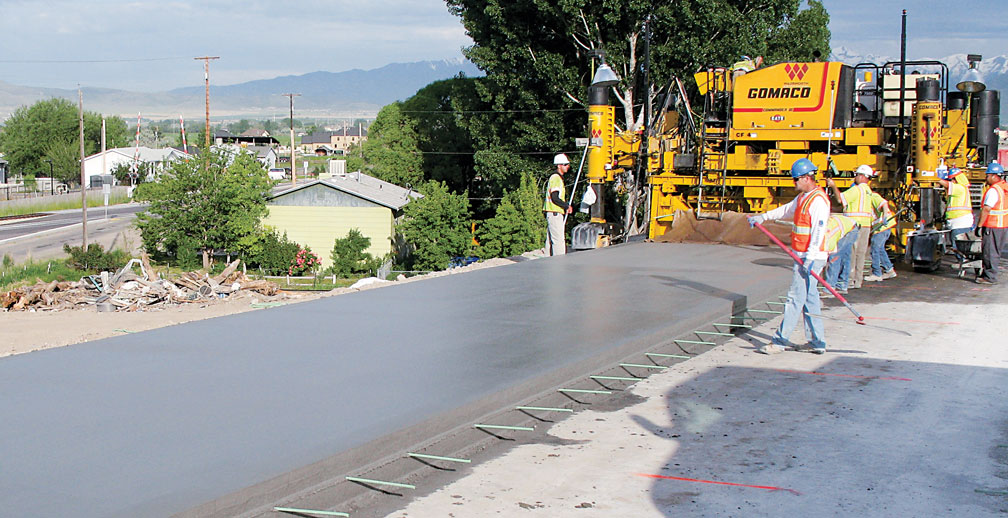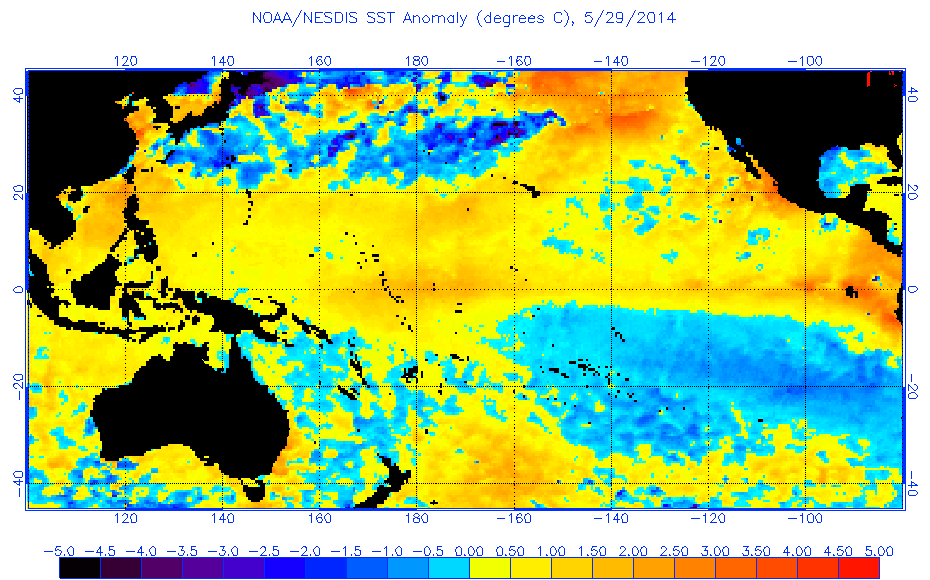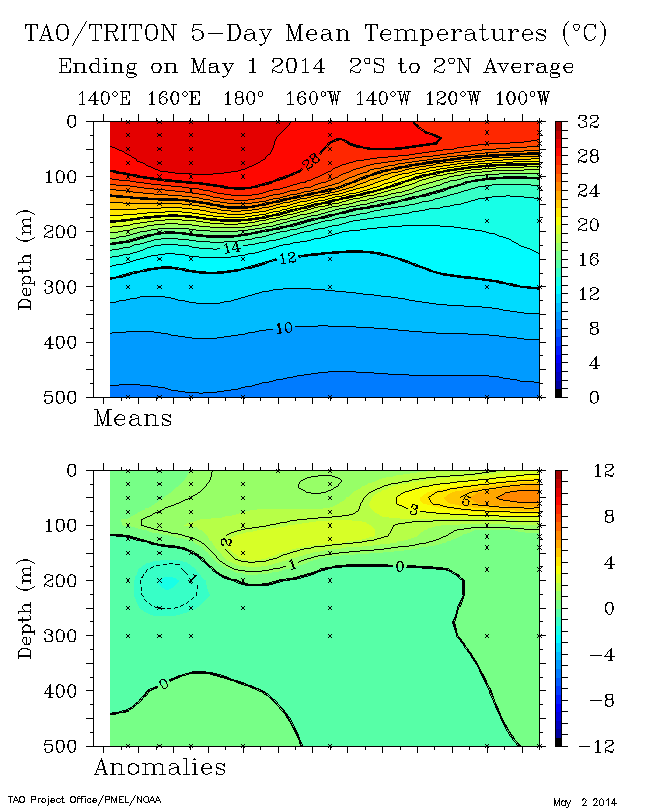Figure 1: The image shows workmen paving road using Asphalt. Source of image: LL Pelling CO. Asphalt Paving.
We all know about asphalt roads, but one that comes to mind is concrete roads, as the name suggests, the surface is done using concrete pavement. Concrete is seldom used on Jamaican roads, but this could change relatively soon. Caribbean Cement Company Limited (CCCL) has been having conversations with the government of Jamaica, their aim is to increase the use of concrete on our road island wide. In this regards, I will have a look at the benefits and downsides of Asphalt and Concrete roads respectively.
Figure 2: The image shows workmen paving road using Concrete. Source of image: GOMACO Corporation.
Asphalt vs Concrete
Asphalt
Asphalt is considered to be an inexpensive pavement material, hence its widespread use. Take the United States for example, asphalt was responsible for approximately 94% of all pavements in 2008, and Jamaica is no different. Asphalt can be recycled and reused, this can be accomplished by melting. Maintenance of asphalt roads is also more economical, damaged areas are easily fixed and existing asphalt surfaces can be relayed. Another notable benefit of asphalt is the time taken to build these roads, asphalt roads are accessible within an hour of being laid.
The average lifespan of asphalt roads is generally under 15 years, this lifespan would be reduced greatly with natural hazards such as extreme downpours. Asphalt is generally derived from the distillation of crude oil, also known as asphaltic bitumen, this makes asphalt vulnerable to spikes in crude oil prices. The United States department of transport suggests that the cost of asphalt has increased by over 200% since 2003, I would assume that the cost is similar or more for Jamaica.
Concrete
Concrete roads are a lot more durable when compared to asphalt, various studies have found that concrete roads can last between 20 to 50 years. The lifespan of concrete roads significantly reduces the cost of maintenance, this will limit the damages of heavy duty trucks and natural hazards. Possibly of most significance, studies have also shown that fuel consumption is reduced by 15-20% on concrete roads.
On the other side of the coin, the initial cost of building concrete roads can be up to 50% more than asphalt. Concrete roads are also more difficult to maintain, and heavy downpours can render the roads slippery.
Asphalt paving companies need not worry about going out of business, if if the use of concrete on roads become prevalent. Minister of transport works and housing, Dr Omar Davies, said that bids for future road repairs or construction will accommodate both asphalt and concrete. So asphalt would not be sidelined. Here's a link to his pronouncements: Concrete Could Be Used On Roads.
On the other side of the coin, the initial cost of building concrete roads can be up to 50% more than asphalt. Concrete roads are also more difficult to maintain, and heavy downpours can render the roads slippery.
Asphalt paving companies need not worry about going out of business, if if the use of concrete on roads become prevalent. Minister of transport works and housing, Dr Omar Davies, said that bids for future road repairs or construction will accommodate both asphalt and concrete. So asphalt would not be sidelined. Here's a link to his pronouncements: Concrete Could Be Used On Roads.
To conclude, the cost to implement concrete roads are generally over 40% more than asphalt, but our only cement maker, CCCL purports that they are capable of building concrete roads for approximately 10% more than the current cost of asphalt. This was evident from a recent gleaner post: Carib Cement Rolls Out Road Plans-Says Cement Is Better Than Asphalt. If this is possible, I see no reasons why we should not be using concrete to build roads, especially with the many long term economic benefits. Plus, most of the cement can be easily acquired here in Jamaica, and this would limit the outflow of foreign exchange. With that being said, I hope that concrete roads will become a permanent part our long term plans.
References:
* http://www.brighthubengineering.com/concrete-technology/45858-concrete-roads-vs-asphalt-roads/
* http://www.pwmag.com/concrete/asphalt-vs--concrete--the-fight-to-pave-our-roads.aspx
* http://www.concreteisbetter.com/wp-content/uploads/2013/06/Concrete-vs-Asphalt.pdf
* http://www.differencebetween.net/object/difference-between-concrete-and-asphalt-roads/








